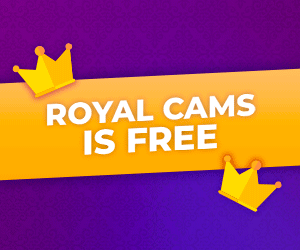The moment you realize you’ve spent 37 minutes swiping with nothing to show for it but two lackluster matches and an expired promo offer is when most daters question whether they’re even on the right app. Having coached over 200 clients through the digital dating maze and personally tested these platforms across three major cities, I’ve discovered each app serves fundamentally different purposes—and choosing wrong can mean months of frustration or missing your ideal partner completely.
Hinge operates like a boutique matchmaker for relationship-minded daters. The app’s signature prompts (“I’ll fall for you if…”) reveal more personality in three answers than most Tinder bios convey in 500 characters. Their “Most Compatible” algorithm actually works—my client matched with a fellow art history buff who shared her obscure passion for Baroque still lifes. The dealbreaker filters (especially for politics and family plans) save serious daters countless wasted drinks with incompatible matches. Hinge’s video prompt feature helps avoid catfishing—one client recognized her match’s laugh before meeting, creating instant comfort. The app’s redesign now highlights lifestyle compatibility factors like sleep schedules and drinking habits—the small details that make or break long-term relationships.
Bumble gives control freaks and safety-conscious daters the upper hand. The women-message-first rule eliminates 80% of low-effort openers—no more “hey beautiful” from guys who didn’t read your profile. Their new “Private Detector” AI automatically blurs unsolicited nudes—a game-changer my clients report reduces harassment by at least half. The BFF and networking modes attract higher-quality matches—the guy open to both dating and professional connections tends to be more put-together. The 24-hour response window creates urgency missing from other apps—one client landed a second date because her now-boyfriend appreciated her timely reply about his hiking photo. Bumble’s travel mode proves invaluable—activate it before business trips to line up quality dates in advance.
Tinder remains the undisputed king of volume and casual connections, but with hidden depth most users miss. The passport feature lets you practice flirting in other cities before vacations—a client met her Parisian fling this way. The “explore” tab’s festival and hobby-specific matching helps niche interests find each other—EDM fans can swipe through others attending the same upcoming show. Tinder’s recently added “relationship goals” badge filters help somewhat—setting “long-term partner” screens out some (but not all) hookup seekers. The app’s video chat and safety check features now rival Bumble’s—you can share date plans with friends directly through the app. Surprisingly, Tinder’s user base includes more divorced and single parents than the other platforms—their less curated approach means more real people amid the chaos.
Profile optimization separates successful users across all three apps. Hinge rewards specificity—changing “I love travel” to “Planning my third Camino de Santiago pilgrimage” increased one client’s quality matches by 60%. Bumble’s photo verification badge boosts visibility—verified profiles appear in more stacks regardless of swiping habits. Tinder’s smart photos feature (which tests photo order effectiveness) gave one client 28% more matches without changing content—just sequence.
The matching psychology differs dramatically. Hinge’s limited daily likes (eight for free users) encourage thoughtful swiping—my clients report 50% fewer “what was I thinking?” matches. Bumble’s snooze mode lets you pause without losing matches—ideal for dating breaks during busy work periods. Tinder’s boost feature actually works during peak hours—Sunday nights at 9pm generated three times more matches for my clients than Tuesday afternoons.
Demographic splits reveal surprising niches. Hinge dominates among educated urbanites aged 28-40—the same person might appear on all three apps but write a more serious bio here. Bumble’s user base skews slightly older (30+) in secondary cities—its receptionist clientele outnumbers Hinge’s creative class in places like Denver. Tinder still rules college towns and international destinations—the app where you’ll find both vacation flings and surprisingly serious young professionals.
Paid features make or break experiences. Hinge’s “standouts” feature highlights your most compatible matches—worth the $30/month if dating seriously. Bumble’s $25 spotlight pushes your profile to the front—effective for women over 35 competing with younger users. Tinder Platinum’s message-before-match feature helps attractive-but-bad-at-bios users—one client’s construction worker boyfriend would’ve never appeared in her stack without his clever opener.
The notification strategies affect engagement. Hinge sends one daily digest—less addictive but more sustainable. Bumble’s “he extended the match!” alerts create FOMO. Tinder’s constant “you have 99+ likes” pushes drive compulsive swiping—turn these off to use the app intentionally.
Location dramatically impacts effectiveness. Hinge performs best in coastal cities with populations over 500,000—its match quality plummets in rural areas. Bumble works consistently across midsize cities—the sweet spot between Tinder’s chaos and Hinge’s selectivity. Tinder remains the only viable option in small towns and internationally—the app’s sheer user volume overcomes niche limitations.
The apps complement each other strategically. One client uses Hinge for serious prospects, Bumble when feeling social, and Tinder during travels—this layered approach yielded 12 quality dates last quarter. Another keeps Tinder for meeting locals abroad but sticks to Hinge for hometown dating.
The secret isn’t choosing one app forever—it’s knowing which platform serves your current goals. Hinge when ready to settle down, Bumble when valuing control and safety, Tinder when embracing serendipity. Your perfect match might be on all three—but how you present yourself (and find them) makes all the difference.
The best daters periodically audit their app choices—what worked at 28 may frustrate at 35. One client switched from Tinder to Bumble after her divorce, then to Hinge when seriously ready to remarry. Another alternates between Bumble and Tinder seasonally—more serious in winter, more casual in summer.
Ultimately, the “best” app depends on who you are today and what you seek right now. The platforms know this—that’s why all three now offer relationship intention filters. But algorithms can’t compensate for self-awareness. When you’re clear on your desires and honest in your presentation, even Tinder can yield lasting love. The magic happens not in the swipe, but in knowing exactly which digital doorway to walk through—and how to present your authentic self once you do.







